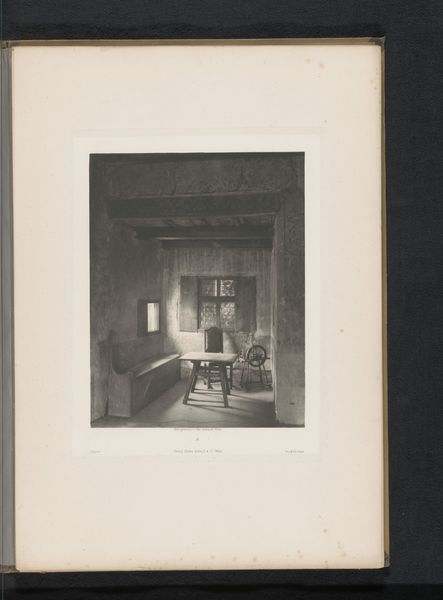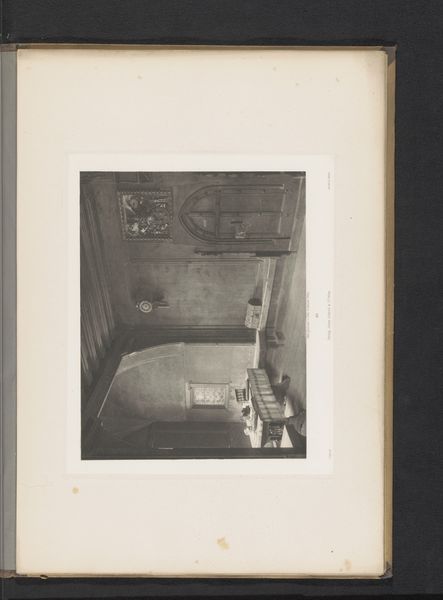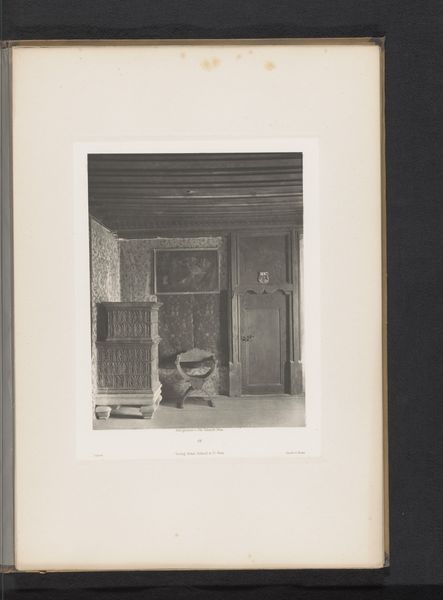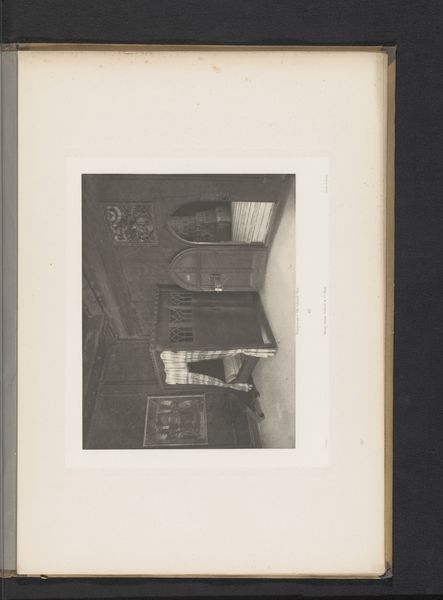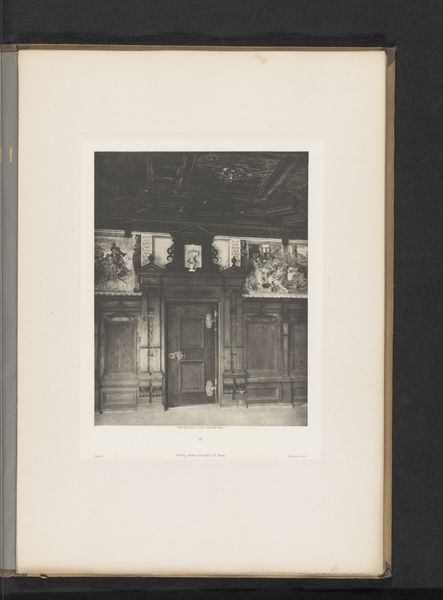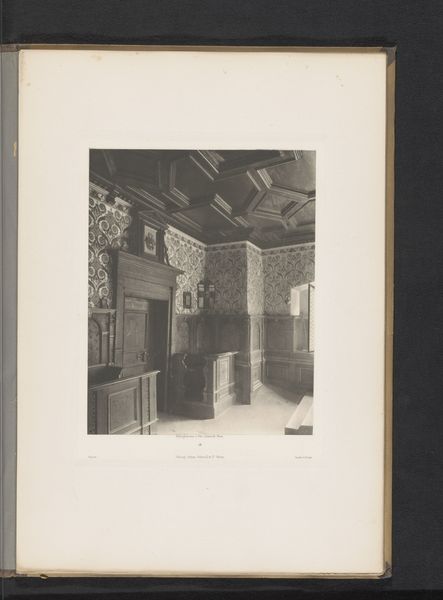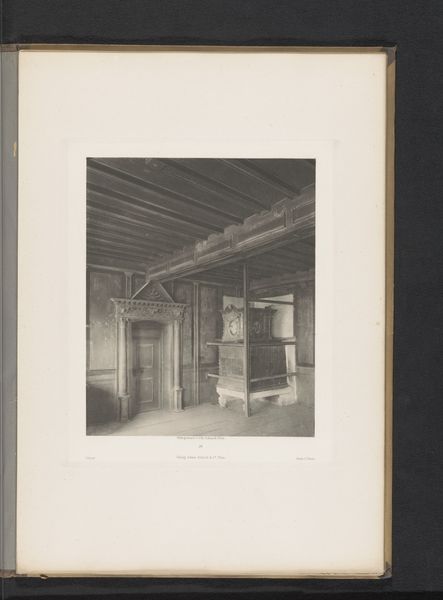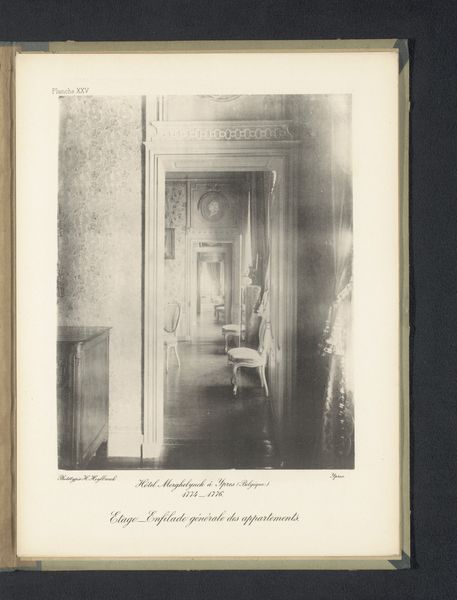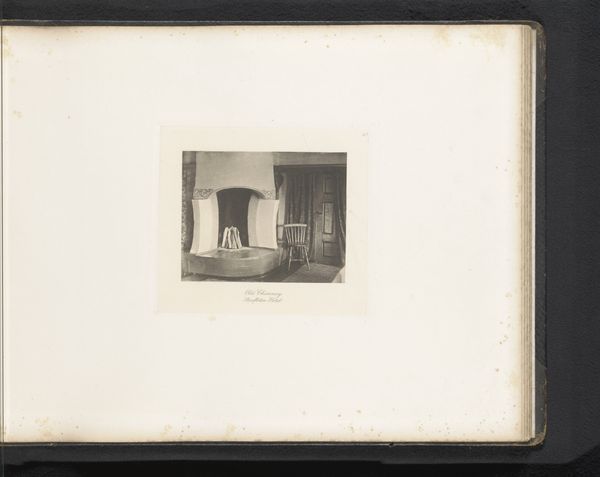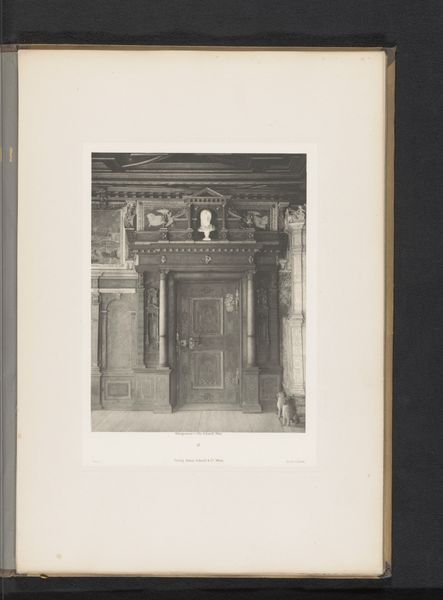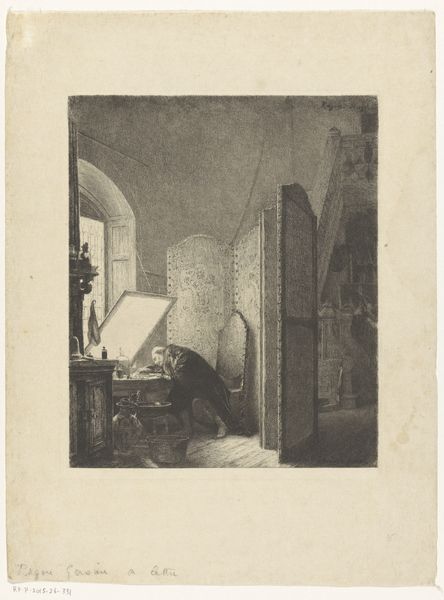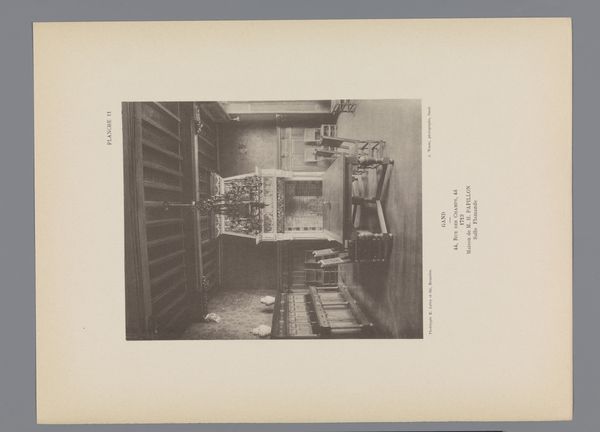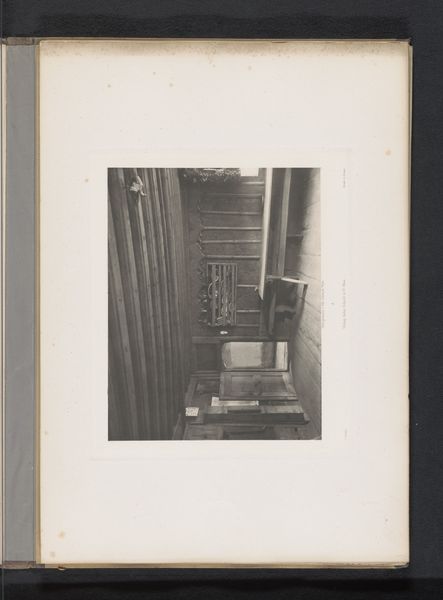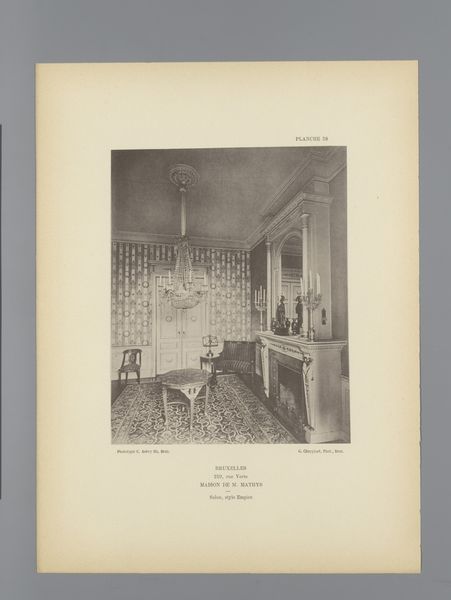
print, photography, gelatin-silver-print
#
ink paper printed
# print
#
landscape
#
photography
#
gelatin-silver-print
#
genre-painting
#
realism
Dimensions: height 244 mm, width 187 mm
Copyright: Rijks Museum: Open Domain
Curator: Looking at this gelatin-silver print, "Houtsnijwerk aan een muur in Burg Reifenstein in Zuid-Tirol, Italië", taken before 1891 by Otto Schmidt, I'm immediately drawn to the way it encapsulates the history embedded in the domestic spaces. Editor: It's quite austere, isn't it? The sharp angles and the stark lighting really highlight the raw materials of the wood and the unadorned space. I wonder what processes were used to achieve such starkness so early in photography's life. Curator: Absolutely, the image does present a stripped-down aesthetic. The wood carvings, although intricate, speak to a visual language rooted in cultural power and craftsmanship. Considering gender and labor within the period, whose hands created these carvings, and what did it signify for the inhabitants of Burg Reifenstein? Editor: I’m curious about the wood itself – the kind of wood, where it was sourced, its journey. The carvings feel very deliberate and integral to the structure itself rather than decorative add-ons. It also speaks to a sustainable approach to design and utility that feels resonant today. What can its materiality teach us about localized resource management and societal structure? Curator: That is a significant point. Thinking about sustainability and material consumption, we should examine the carving and its themes. Given its likely religious symbolism – look closer; you can see figures and biblical scenes carved in – could it be reflecting and reinforcing particular religious and social norms within the South Tyrol region at the time? How did these artistic choices function as vehicles for controlling belief systems? Editor: It also speaks to accessibility. The location itself--the walls of a burg, the wood on those walls, and the tools used in crafting them, were all quite likely sourced or produced close by. How would something like this have played a functional role to the community, say for a traveling tinker or local artisan? Was this a point of rest, advertisement, or display? I wonder about how this form could possibly inform craft in the coming century. Curator: Food for thought! It does invite a consideration of how class and privilege would interact with the everyday lived experiences represented here. How did inhabitants – whether wealthy residents, staff, or local visiting workers—relate to this image? It reveals social complexities tied to both visibility and access to artistic craft. Editor: In the end, appreciating art is to have an experience – thinking not just about the final form but all those formative pieces of art that built into something as detailed and historical as this print here, is more fulfilling when understood and considered for its base elements. Curator: For me, engaging with this print means engaging with a multilayered narrative. Analyzing the photograph as an intersectional lens broadens its meaning beyond just the aesthetics of the time. It invites us to examine social hierarchy, labor, religious beliefs, and cultural representation, making the work profoundly relevant today.
Comments
No comments
Be the first to comment and join the conversation on the ultimate creative platform.
